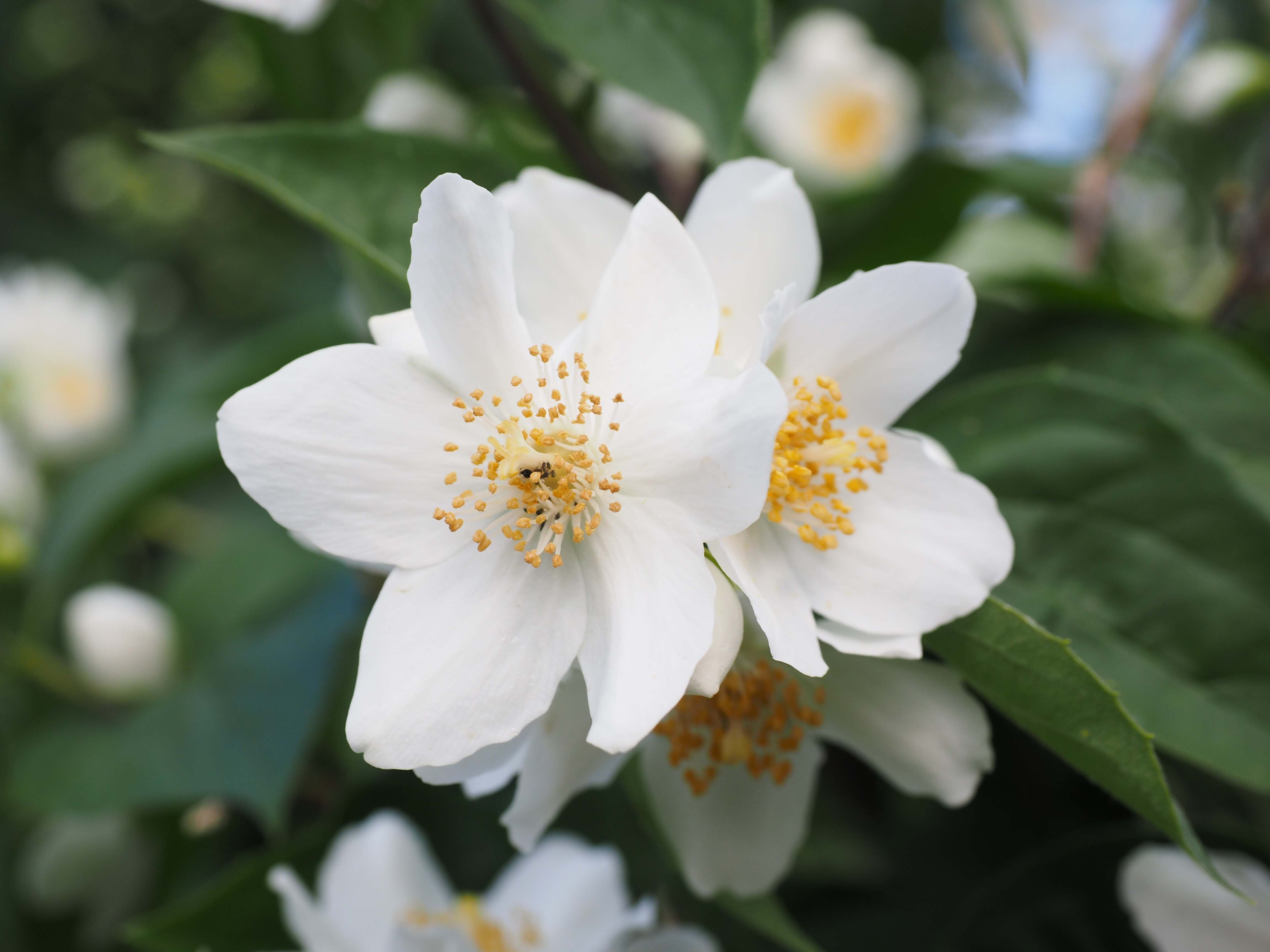
Scent oils for every type of business and space
Our scent oils represent quality, strength, and safety. We collaborate with the best perfumeries to ensure we always meet the highest standards. All our scent oils, both essential and non-essential, come with the required documentation and IFRA statements. IFRA (International Fragrance Association) is the leading organisation that sets safety guidelines for scent materials, and our products fully comply with these standards. This means you can enjoy a scent experience that is not only safe but also incredibly pleasant! Want to give it a try?

What is scent oil?
Scent oil is oil specifically developed to spread pleasant scents in various environments. Scent oils are widely used to enhance the scent experience of a space, such as in offices, shops, hotels, and other public or private areas. Scent oil helps keep a space fresh and contributes to a positive atmosphere and experience.
What Types of Scent Oils Are There?
There are two main types of scent oil: essential scent oil and non-essential scent oil. Both types have their own characteristics and applications.
-
Essential oil
Essential scent oil, also known as essential oil, is directly extracted from natural raw materials such as flowers, leaves, seeds, peels, or wood of plants. These oils are minimally processed to preserve the pure aromatic compounds of the plant. They are often a popular choice for aromatherapy and scent experiences, thanks to their authentic scent and natural origin. -
Non-essential oils
Non-essential scent oil, also known as artificial, nature-identical, or synthetic scent oil, is produced by replicating the molecular structure of essential oil. The aim is to closely mimic the molecular structure of the natural scent oil during the manufacturing process. We know exactly what is processed into these oils during production, ensuring the safety and effectiveness of our products.
Want to know more about the differences and similarities between essential and non-essential oils?
Scent oil as an (unconscious) influencer
A tool not to be underestimated
Scent oil is a tool that can significantly contribute to your organisational goals. Smell is an essential factor in our appreciation of a space. If it smells good somewhere, we feel at ease, judge the environment more positively, and we (unconsciously) want to return there because of this positive experience. A tool not to be underestimated!
Why does scent oil work?
Why is it that smell, and therefore scent oil, have such a powerful impact? It’s because smell is the only sense directly connected to our limbic system, the part of the brain responsible for emotion, motivation, pleasure, and emotional memory. This connection allows scent oils to evoke emotions, shape perceptions, energize, soothe, and even trigger memories. It may surprise you, but as much as 75% of our emotions are influenced by scent! And most of our decisions are made unconsciously, driven by these emotions.
How is scent oil constructed?
Scent oils are made up of top notes, heart notes and base notes. These notes develop at different speeds. As a result, they do not spread simultaneously in a room.
- Top notes: Top notes are immediately dominant and volatile.
- Heart notes: Heart notes are smelled as the top notes dissipate.
- Base notes: Finally, base notes linger the longest.
All in all, as soon as the oil is nebulised in the room, the scent notes come to life!
The Sense of Scent Circle
Since it is easier to think in colours than in scents, we developed the scent circle. Our scent oils can be divided into four quadrants: floral, ambery, woody and green/fresh. These quadrants are, in turn, divided into different scent families, each of which has a different composition in top, heart and base notes. In short, each scent oil has its character and strength!
.png?width=300&name=pexels-wilson-vitorino-3115637%201%20(2).png)
Floral scent oil
Scents from the floral quadrant are often referred to as delicate, feminine and associated with seduction and passion.
The floral quadrant borders on the one hand on fruity and on the other hand on amber scents. Scents from this quadrant can consist of top, heart and base notes, depending on the scent's composition. In addition, floral scents are divided into three scent families: flower (freshly picked), soft flower (aldehyde, powdery notes) and spiced flower (sweet spices, orange blossom).
Amber scent oil
Scents from the amber quadrant are classic, somewhat heavier, and take you along the Middle East, Africa and South America.
The amber quadrant borders on the floral and woody scents. Scents from this quadrant can consist of top, heart and base notes, depending on the scent's composition. In addition, ambery scents are divided into three scent families: floral amber(warm with a floral undertone), soft amber(aromatic and edible ingredients) and woody amber(strong woody tone).
Woody scent oils
Scents from the woody quadrant are often seen as heavy, masculine scents. Scents are also often used in men's perfumes.
With their heavy character, scents from the woody quadrant consist mainly of base notes: ingredients that you keep smelling for a very long time. In addition, woody scents are divided into four scent families: woody (sandalwood and cedar), mossy (moss and amber), dry (leather and musk) and aromatic (cinnamon, lavender and clove).
Green/fresh scent oil
Scents from the green/fresh quadrant are ideal for refreshing your environment. These provide the ultimate hygiene experience.
The green/fresh quadrant borders the woody quadrant with its aromatic scent. And on the other hand, with its fruity scents in the floral quadrant. Due to their volatile nature, fresh scents consist mainly of top notes. After being nebulised, they spread quickly in the room and are dominant for a short time. Ideal to combat stubborn odour problems. A constant scent level is guaranteed by setting the scent machine correctly despite its volatile nature. In addition, the green/fresh scents are divided into four scent families: fruity (berries, fruits), greenish (hyacinth, green notes), aquatic (sea notes) and citrus (lime, bergamot, citrus oil).
Discover our scent colletion
(71)
Algae & Oceanwater
Fresh, Salty, Sultry
Aloe Vera
Relaxing, Calming, Refreshing
Lavender
Fresh, Relaxing, Calming
Orange & Cedar
Fresh, Warm, Wood
Pine
Woody, Fresh, Calming
Lavender & Orange
Floral, Fruity, Fresh
Tranquility
Fresh, Warm, Relax
Oolaboo
Soft, Sweet, Fresh
Baby Soft
Soft, Sweet, Soothing
Anise
Spiced, Wellness, Relaxing
Salted Caramel
Caramel, Floral, Freshness
Xourthe
Strong, Rich, Luxurious
Rosemary & Eucalyptus
Sharp, Fresh, Herbal
Lavender & Eucalyptus
Lavender & Eucalyptus
Breathing
Relaxing, Fresh, Mint
Lemon
Fresh, Clean, Pure
Bergamot & Orange
Fruity, Fresh, Strong
Cappuccino
Coffee, Warm, Welcoming
Maison
Luxe, Rich, Exclusivity
Aqua di Parma
Masculine, Warm, Luxurious
Fizzy Lemon
Light, Fresh, Sharp
Marrakesh Market
Spices, Nuts, Agarwood
Lime Tree
Soft, Supple, Fresh
French Bloom
Sweet, Elegant, Warm
Tuscany Ridge
Warm, Sweet, Fruity
Anise & Eucalyptus
Relaxing, Spicy, Saunas
Lavender & Pine
Fresh, Relaxing, Calming
Black Dahlia
Luxurious, Feminine, Warm
Cedar Silk
Warm, Woody, Soft
Nyasia’s Nature
Powerful, Warm, Luxe
Mintsport
Fresh, Activating, Sporty
Radiance
Fresh, Cheerful, Neutralising
Lavender & Peppermint
Refreshing, Calming, Soothing
Eucalyptus
Relaxing, Sauna, Purifying
Fresh Rainforest
Fresh, Green, Citrus
Sandalwood
Rich, Amber, Wood
Sweet Apple Pie
Sweet, Warm, Powerful
Jasmine Secret
Sweet, Warm, Amber
Anise & Peppermint
Powerful, Green, Fresh
Green Tea
Fresh, Rich, Trusted
Pine & Eucalyptus
Fresh, Powerful, Woody
Zhourba
Amber, Spicy, Relaxing
Peppermint
Sharp, Fresh, Stimulating
Isideau
Warm, Leather, Slightly Sweet
Hot Chocolate Milk
Soft, Sweet, Warm
Fresh Linen
Fresh, Soft, Neutralising
Woodborough
Powerful, Atmospheric, Wood
Lemon & Orange
Fruity, Fresh, Uplifting
Melissa & Eucalyptus
Cleansing, Relaxing, Sauna
Revitalizing
Refreshing, Clean, Energy
Eucalyptus & Peppermint
Relaxing, Fresh, Sauna
Rosemary & Pine
Fresh, Wood, Relax
Fresh Cut Grass
Grass, Fresh, Spring
Green Apple
Fresh, Fresh, Sour
Smoker
Smoke, Wood, Fire
Wild Fig
Full, Fruity, Nutty
Cedarwood
Luxury, Woody, Power
Zenith
Luxurious, Powerful, Refined
Christmas
Sweet, Aromatic, Warm
Pink Pepper Amberwood
Sweet, Warm, Wood
Éclats de Bergamote
Sweet, Fresh, Citrus
Citronella & Kaffir
Fresh, Citrus, Sanitary
Teakwood
Powerful, Spicy, Luxurious
Character
Rich, Powerful, Characteristic
Oudh Hammam
Spiced, Fresh, Cleansing
Lemon & Vanilla
Fresh, Soft, Neutralising
Bamboo
Fresh, Green, Soothing
Pure Luxury
Rich, Exclusive, Welcoming
Funny Valentine
Fruity, Floral, Warm
Honeydew Melon
Sweet, Fruity, Fresh
Easy Breeze
Powerful, Fresh, SaunaHow is scent oil used?
There are several ways to diffuse scent oil in a room. For example, wall sprays, granules, dry mist, heating and ultrasonic. All of these techniques, in our opinion, do not do justice to the scent or do not provide a consistent scent experience. One method we are convinced of? The cold diffusing technique. During this nebulisation process, the oil dissolves in the air as a dry mist and is carried around the room by the natural airflow. This way, the scent oil spreads evenly and does not sink to the ground quickly. A constant scent experience is guaranteed!
How safe is our scent oil?
We can be brief about that: 100% safe. Our scent oil reaches millions of people at home and abroad every day. That brings a lot of responsibility. That's why we work with the best perfume houses and follow the IFRA (International Fragrance Association) standards. This way, we can guarantee 100% safety. After all, safety comes first for us!